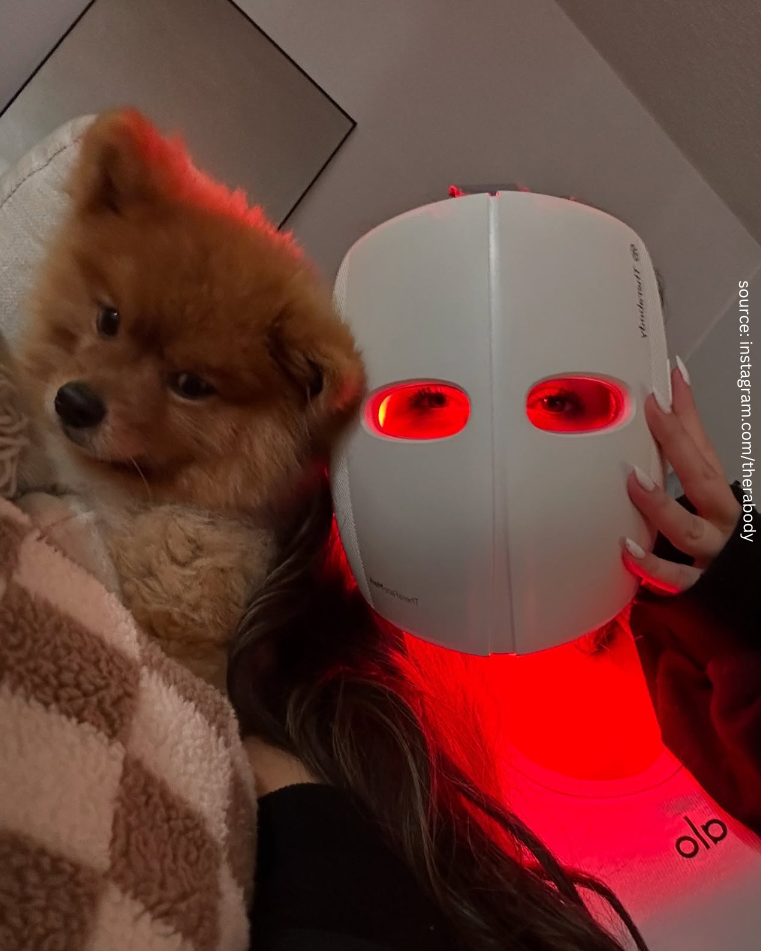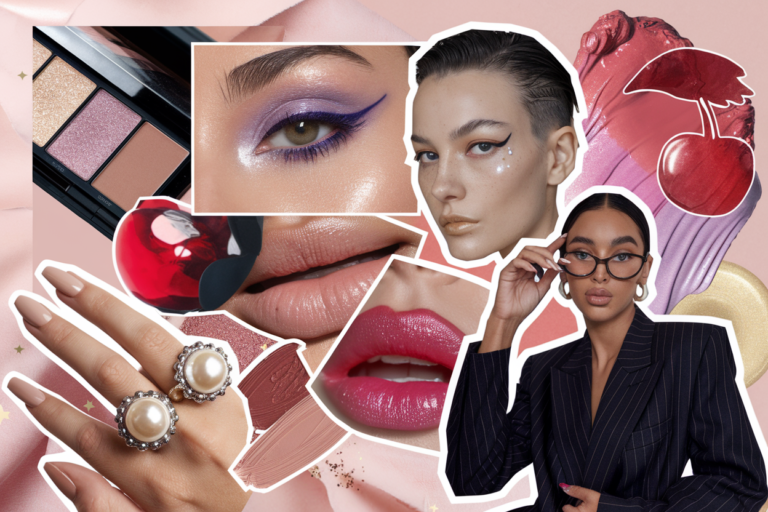I’ve seen LED face masks all over social media lately. These colorful devices promise to fix skin issues and make us look younger. But do they really work?
I looked into the science behind LED masks. LED face masks can lead to small improvements in skin texture and wrinkles with regular use. The masks use different colored lights to target specific skin concerns. Blue light may help with acne, while red light can reduce fine lines.
At-home LED masks aren’t as strong as the ones used by dermatologists. The effects are less dramatic than professional treatments. Still, some people find them helpful as part of their skincare routine. It’s important to have realistic expectations about what these masks can do.
The Science Behind LED Masks
LED masks use specific light wavelengths to target different skin concerns. These devices aim to improve skin health and appearance through controlled light exposure.
Light Therapy and Skin Care
Light therapy has been used in skin care for years. It works by sending light waves deep into the skin. This triggers changes at the cellular level.
LED face masks are a newer at-home version of professional light treatments. They use different colored lights to target specific skin issues.
I’ve found that red light is often used for anti-aging. Blue light can help with acne. Green light may reduce pigmentation.
The idea is that regular use can lead to clearer, younger-looking skin over time.
Wavelengths and Skin Benefits
Different light colors have unique wavelengths. Each wavelength penetrates the skin to a certain depth. This affects which skin layers and structures they can reach.
Red light (630-660 nm) stimulates collagen production. It may help reduce fine lines and improve skin elasticity.
Blue light (415-495 nm) can kill acne-causing bacteria. It might help reduce breakouts and inflammation.
Studies show that these wavelengths can be effective for skin care. But results can vary from person to person.
I’ve learned that consistent use is key for seeing potential benefits from LED masks.
Efficacy of LED Masks in Treating Skin Conditions
LED masks use different colors of light to target various skin issues. I’ve found that these devices can help with acne, inflammation, and collagen production when used correctly.
Acne Management
Blue light in LED masks can be effective for acne treatment. It works by targeting acne-causing bacteria in the skin. I’ve seen that blue light can reduce breakouts and prevent new ones from forming.
Some LED masks combine blue and red light for better results. This combination can help kill bacteria and reduce inflammation at the same time.
It’s important to use LED masks consistently for acne treatment. I recommend following the manufacturer’s instructions for best results.
Reducing Inflammation
Red light in LED masks can help reduce skin inflammation. I’ve noticed it can calm redness and irritation associated with various skin conditions.
This light penetrates deeper into the skin than blue light. It can help with issues like rosacea and general skin sensitivity.
Regular use of red light therapy may also speed up healing of minor skin injuries. I’ve found it particularly helpful for reducing post-acne marks.
Collagen Production
Red and near-infrared light can stimulate collagen production in the skin. I’ve seen improvements in skin firmness and reduction of fine lines with consistent use.
These wavelengths of light can boost skin cell energy production. This leads to increased collagen and elastin formation over time.
For best results, I recommend using LED masks with red or near-infrared light several times a week. It’s important to be patient, as collagen production takes time.
While LED masks can be effective, individual results may vary. I always suggest consulting a dermatologist before starting any new skin treatment.
Comparative Analysis of LED Masks and Professional Treatment
LED masks and professional treatments both use light therapy for skin care. They differ in key ways that affect results, cost, and convenience.
Intensity and Penetration
LED masks for home use typically have lower light intensity than professional devices. This means the light doesn’t penetrate as deeply into the skin.
Professional treatments use stronger LED lights that can reach deeper skin layers. This often leads to faster and more noticeable results.
I’ve found that at-home masks may take longer to show effects. You might need to use them more frequently to see changes.
Cost-Effectiveness
Home LED masks can be a good investment for long-term use. The upfront cost is higher, but you can use them repeatedly.
Professional treatments are pricier per session. They may add up quickly if you need multiple visits.
I think home masks are cost-effective for mild concerns. But for serious skin issues, professional treatments might be worth the extra expense.
Convenience and Safety
Home LED masks are very convenient. I can use them while relaxing or doing other tasks.
Professional treatments require appointments and travel time. But they’re done by trained experts who can adjust settings for your skin.
Safety is crucial for both. Home devices have built-in timers and lower intensities to prevent overuse. Professional treatments are closely monitored.
I always recommend following instructions carefully with home masks. For professional treatments, it’s important to choose a reputable provider.
User Guidelines for Optimal Results

Getting the most out of your LED face mask requires following some key practices. I’ll cover the important aspects of using and maintaining your device for the best results.
Duration and Frequency of Use
I recommend starting with short sessions of 10-15 minutes, 3-4 times a week. As your skin adjusts, you can gradually increase to 20-30 minute sessions. For acne treatment, daily use may be beneficial.
It’s crucial not to overuse the mask. More isn’t always better with LED therapy. Stick to the manufacturer’s guidelines for your specific device.
I suggest using the mask after cleansing but before applying serums or moisturizers. This allows the light to penetrate your skin more effectively.
Remember to be patient. Results can take time and may vary based on your skin condition and device quality.
Maintenance of the Device
Proper care of your LED mask is essential for safety and effectiveness. I always clean my device after each use with a soft, damp cloth. Avoid using harsh chemicals that could damage the LEDs.
Store your mask in a cool, dry place away from direct sunlight. This helps preserve the light-emitting diodes.
Check the device regularly for any signs of wear or damage. Replace it if you notice any cracks or malfunctioning lights.
For battery-operated masks, I make sure to charge them fully before each use. This ensures consistent light intensity throughout the treatment.
Lastly, keep track of how long you’ve had your mask. Many devices have a lifespan of about 2-3 years with regular use.
Clinical Studies and Research Findings

I’ve looked into several studies on LED face masks. The results are mixed, but some show promise.
One clinical study found LED masks can benefit the skin. But the effects vary based on the device, how often it’s used, and a person’s skin.
A recent study tested a new type of LED mask. It improved skin elasticity by 340%. This is a big jump, but more research is needed to confirm these results.
Red light seems to be the most studied. One trial used red LED masks twice a week for 3 months. It found the masks could reverse signs of skin aging.
Blue light may help with acne. But I haven’t found solid proof for other colors like green or yellow.
It’s key to note that at-home masks are not the same as in-office treatments. They use less power and may take longer to see results.
More long-term studies are needed. While some research looks good, we don’t know all the effects of using these masks over time.
Consumer Testimonials and Reviews
I’ve looked into what real users are saying about LED face masks. Many people seem excited about trying this skincare tech at home.
Some users report seeing improvements in their skin after using LED masks regularly. They talk about reduced acne and smoother skin texture.
I’ve noticed mixed reviews on effectiveness. While some rave about results, others say changes were minimal. A few mention it takes time and consistency to see any difference.
Comfort is another common topic in reviews. Some find wearing the mask relaxing, like a mini spa treatment. Others say it can feel a bit warm or claustrophobic.
Price comes up often too. Higher-end masks get praise for quality, but budget options have fans who say they work well enough.
Here are some pros and cons I’ve gathered from user feedback:
Pros:
• Easy to use at home
• No harsh chemicals
• Can be relaxing
Cons:
• Results vary person to person
• Takes time to see effects
• Some find them uncomfortable
Overall, I see a mix of opinions. While not a miracle cure, many users seem to enjoy LED masks as part of their skincare routine.
Potential Side Effects and Considerations
LED face masks can have some risks. I’ll cover two key areas to think about before using one.
Skin Sensitivity
LED masks may cause skin issues for some people. Irritation or redness can happen if used too much. I suggest starting with short sessions to see how your skin reacts.
Some masks are very bright. This might bother sensitive skin. If you have conditions like rosacea or eczema, be extra careful.
Heat from the lights could also cause problems. Make sure to follow the maker’s instructions on how long to use the mask.
Medical Consultation
I think it’s smart to talk to a doctor before using an LED mask. This is key if you have eye problems or take meds that make you sensitive to light.
Your doctor can help decide if LED masks are safe for you. They can also give tips on how to use them right.
People with certain health issues should be extra careful. This includes those with a history of skin cancer or eye disease.
Legal and Safety Regulations
LED face masks are subject to various regulations to ensure consumer safety. These rules cover product approval and quality standards.
FDA Approval
The FDA regulates LED face masks as medical devices. They must meet specific safety requirements before being sold.
Some key points about FDA approval:
- Manufacturers need to register their devices
- Products must have proper labeling
- Certain claims require clinical evidence
I’ve found that many LED masks on the market aren’t FDA-approved. This doesn’t always mean they’re unsafe, but it’s something to consider when buying.
Quality Assurance Standards
Beyond FDA approval, quality standards help ensure LED masks are safe and effective.
Important quality checks include:
- Testing for electromagnetic compatibility
- Verifying light output and wavelengths
- Assessing materials for skin contact safety
I recommend looking for masks certified by recognized testing labs. This gives extra assurance of product quality and safety.
Some countries have stricter rules than others. In the UK, for example, LED therapy may soon require licensing as a cosmetic procedure.
Advancements and Future of LED Masks
LED face masks have come a long way since their introduction. I’ve seen impressive improvements in their design and functionality over the years.
Recent advancements include:
- Lighter, more comfortable materials
- Flexible designs that conform to facial contours
- Improved battery life for longer treatments
- Combination of multiple light wavelengths in one device
Looking ahead, I expect to see even more exciting developments. Researchers are exploring ways to enhance the effectiveness of LED therapy for various skin concerns.
Some potential future innovations I’m watching for:
• Integration with smartphone apps for personalized treatments
• Use of AI to optimize light therapy based on individual skin needs
• Combination of LED therapy with other skincare technologies
While current studies on LED mask efficacy are mixed, ongoing research may lead to more targeted and effective treatments. I’m particularly interested in how improving the depth of light penetration could boost results.
As technology advances, I anticipate LED masks becoming more accessible and user-friendly. This could make professional-grade light therapy available to more people at home.
Frequently Asked Questions
LED face masks have gained popularity for skin care. People want to know if they really work and how to use them safely. Let’s look at some common questions about these high-tech beauty devices.
What improvements can be expected from using an LED face mask for skin concerns?
LED masks may help with several skin issues. Red light can boost collagen and reduce wrinkles. Blue light may fight acne-causing bacteria.
Some users see less redness and inflammation. Skin tone might look more even. Results vary for each person.
Is there scientific evidence to support the efficacy of LED masks for anti-aging?
Some studies show LED therapy can help with aging skin. Research has found improvements in wrinkles and skin texture.
But more long-term studies are needed. The effects may be subtle for at-home devices compared to professional treatments.
What are potential adverse effects associated with the use of LED light therapy masks?
LED masks are generally safe when used correctly. Some people may have mild side effects like:
- Redness
- Irritation
- Eye strain
It’s important to follow the instructions. Don’t overuse the mask or stare directly at the lights.
How frequently should an LED face mask be used to observe noticeable results?
Most masks are meant for daily use. Sessions usually last 10-20 minutes. It can take weeks or months to see changes.
Consistent use is key for best results. I recommend following the manufacturer’s guidelines for your specific device.
Can LED face masks provide professional-level results in at-home treatments?
At-home LED masks are less powerful than professional devices. They may give some benefits, but likely not as strong as in-office treatments.
Home masks can be a good option for maintenance between pro sessions. They’re more convenient and cost-effective for regular use.
Are LED light therapy masks considered a safe treatment option by skin care professionals?
Many skin experts view LED masks as safe when used properly. Dermatologists often recommend them as a gentle treatment.
I always suggest talking to a doctor first, especially if you have skin conditions or take medications that make you light-sensitive.


